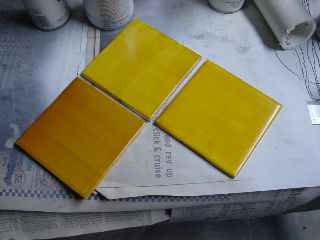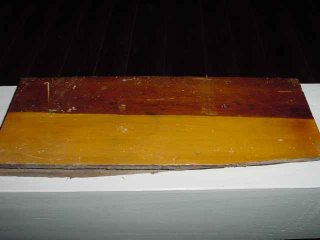
Now before you get too excited, it took about 6 hours to get this far:

It took another two hours to scrape what was left and then I got to flip over the door.

This side only has 4 layers of paint not 8 like on the reverse. If I can get the white and grey layers off then the original coats come off a lot easier. Removing the top two layers revealed the original two tone colors of this door. It also makes removing these green layers much easier.

To get this done took about 30 minutes. After 3 hours the door looks like this;

Once the paint is stripped I then use a palm sander. I start with a #60 grit paper to remove the flecks of remaining paint. I then fill the holes with wood putty before sanding with a #80 grit paper and then a #150 grit paper. Here is the door that I did last week after the #60 grit sanding;

I won't stain these doors either. I will probably use the boiled linseed oil and turpentine (or paint thinner) mix on them because the wood is quite dry and then shellac them. I expect they will turn out like this one in our bedroom;

So for all you potential strippers out there who want some advice on technique, here is what I have to offer. Not much, I know but every little bit helps. Now if you would like to slip dollar bills my way then feel free to do so! I just have to put my garter belt on....










































